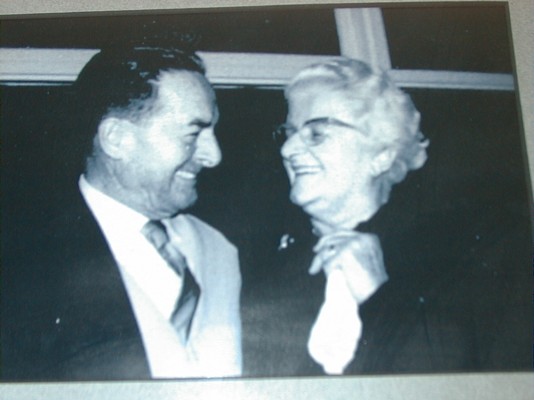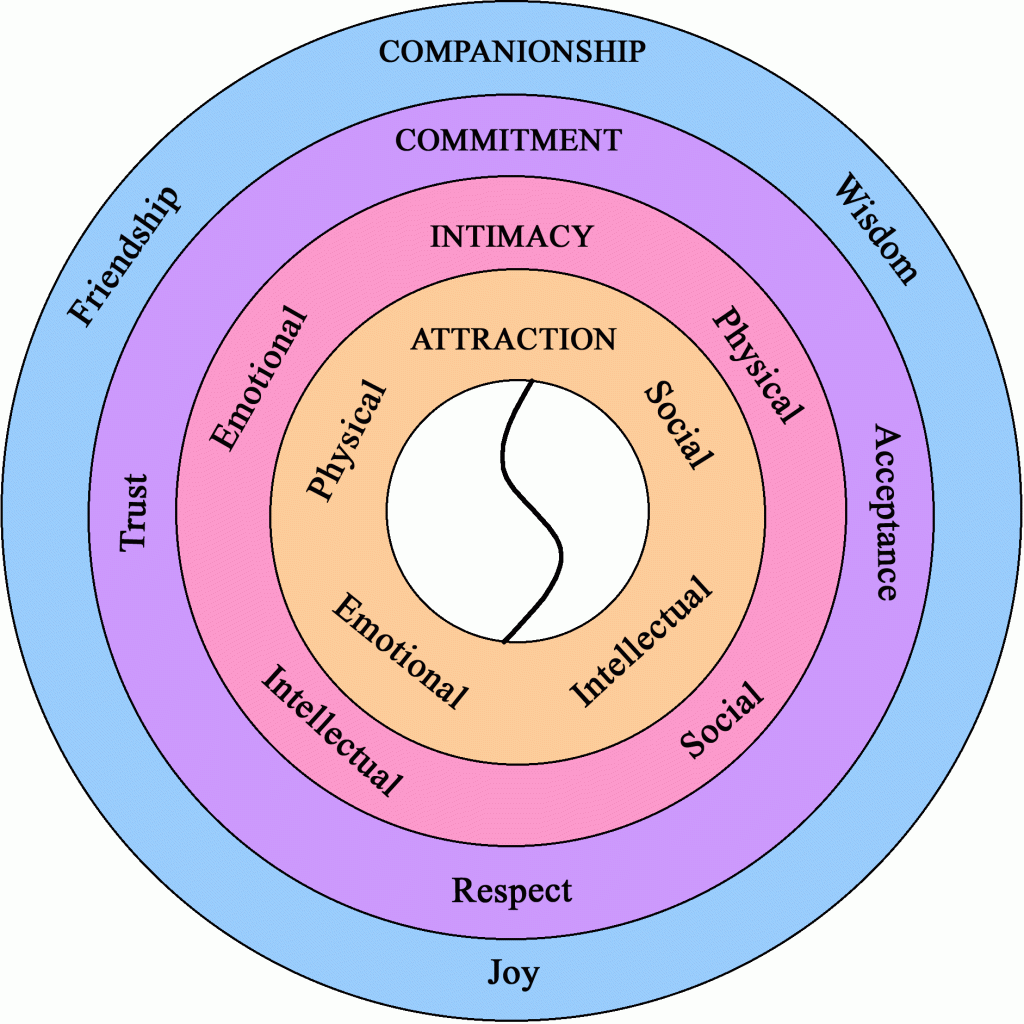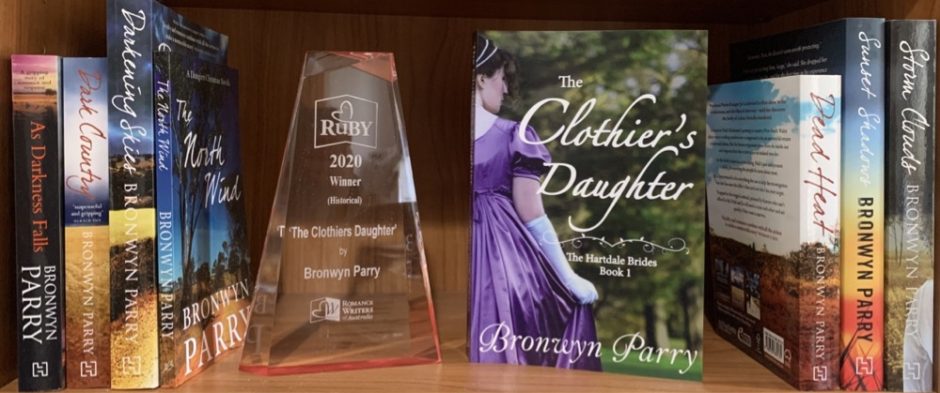This article first appeared in the Romance Writers of Australia newsletter, Hearts Talk, in August 2010, and was reprinted in the Best of Hearts Talk in August 2013.
Romance writers’ magazines and blogs have many excellent and useful articles about aspects of writing; character arcs, structure and plotting, deep POV, writing sensual scenes. But if you’ve ever finished reading a romance novel wondering whether the happily-in-lust couple will last beyond the first few months together, you’ll know that there’s one issue that we accept as a given in the genre, yet that we don’t explore enough, one that should be at the heart of every romance novel: love itself.
My favourite photo is of my aunt and uncle, after forty years of marriage, still gazing at each other with such joy, love and delight that they are both beautiful. And they really were like that, everyday – so much in love, and joyous with it.

How can we write our characters so that our readers are able to imagine them gazing at each other with that same joy and love, forty, fifty, sixty years after the last page of the book?
What makes that kind of love? What is necessary for a lasting relationship? Scientific research has provided evidence of some of the physiological and psychological responses of sexual attraction, but this still doesn’t answer all the hows and whys of love – especially love that lasts for a lifetime.
After considering the evolution from initial meeting to the contentment that many long-lasting couples share, I’ve put together a framework that broadly outlines four phases in the development of a lasting, committed relationship – Attraction, Intimacy, Commitment and Companionship.

We concentrate, in the romance genre, on the beginning of the story – on the attraction and developing intimacy. But each of the four phases is complex, and contains challenges for both partners, requiring the development of emotional strength and maturity and an increasing understanding of themselves and their partner.
Phase 1: Attraction
The first phase, in the centre of the diagram after our hero and heroine meet, is attraction. They notice each other, their pulses quicken, all five senses heighten, and the pheromones swing into action. But there’s more to attraction than just the physical.
There’s emotional attraction: our characters may be attracted to courage or risk-taking, or they may find irresistible the other’s light humour, cheeriness, or stubborn determination. A warrior may be driven to protect, and a compassionate nurturer may see a damaged soul to heal… Whatever the emotional makeup of our characters, they are drawn to the other emotionally as well as physically.
Intellectual attraction includes wit, language, learning, imagination, and memory, in addition to IQ and education. How our characters’ brains work, what they do with them, and how they do it, can be deliciously attractive!
Social attraction refers to the milieu in which our characters move, and how they relate to others. Class, community, friends, interests, causes; all these things make up our characters’ social lives, and are a part of who they are. Mr Darcy may not have been socially attracted to the Bennett family, but as he came to know Elizabeth, you can see that social attraction to her developing quickly – even as he fought it!
Phase 2: Intimacy
With attraction drawing our characters closer to each other, they move into the second phase – intimacy. But intimacy, like attraction, can be more than physical, and all forms of intimacy require a degree of vulnerability, of stepping outside a comfort zone. Uncertainty, awkwardness, embarrassment, and fear of failing are all common emotions to work through, as our characters draw closer to each other and gradually drop their natural barriers. The vulnerability of being physically naked and intimate may be less threatening than the vulnerability of emotional intimacy and honesty. It takes emotional courage to risk allowing someone to see the true person beneath the public face, to reveal thoughts, feelings and secrets.
Social intimacy develops as our characters share activities, and meet and mix with each other’s friends, families, communities, or ‘clans’. A heroine may salivate at the mere thought of the hero’s muscular shoulders, but how does she deal with his traditional Saturday afternoon footy-watching with the lads? And how does he deal with her close circle of art-critic friends? As they ‘move in’, to a degree, to each other’s lives, they will need to negotiate conflicts to find positive solutions for both of them. As shared experience builds, so too does the shared history and emotional intimacy.
Intellectual intimacy develops through shared interests and tasks, and complementary intelligences. Our characters see how the other’s intellect functions, their particular mental processes, talents and traits. A logical, process-focused techno-geek and an over-imaginative, dreamy hippy can make a great couple – as long as they can learn to value each other’s ways and work together effectively to solve problems or achieve goals.
Phase 3: Commitment
The commitment to a life together is far more than a proposal and an engagement ring! Commitment is a significant emotional step; it takes the attraction and intimacy to another level, and in order to make it, our characters need to have respect – both for their partner, AND for themselves. Respect is the key foundation stone of any lasting relationship – without it, the relationship becomes a power-play instead of an emotional commitment.
If respect is the foundation stone, then trust and acceptance are the cement that binds the characters relationship together. Attraction and intimacy are essential, but not sufficient to make a commitment last. Our characters need to keep faith in and trust each other, and themselves, through thick and thin. They also need to accept themselves for who they are, and their partner, in order to move to the point of emotional commitment.
The commitment is not conditional on the other changing, or behaving in certain ways; the commitment is to the other as a whole person, with all their complexities, their strengths and weaknesses. It’s a commitment to journeying together, to relying on each other for care and comfort through the many challenges, to working together to overcome obstacles, and to sharing the successes and rewards along the way.
Phase 4. Companionship
This is the phase we see a glimpse of in an epilogue – or the phase our characters are enjoying when they reappear in subsequent novels in a series!
In addition to the attraction, intimacy and commitment already developed, in this phase our characters are enjoying a deep friendship. They continue to like each other, and enjoy each other’s company for it’s own sake. They’ve developed wisdom, through a deeper understanding of themselves and others. And their lives are full of not mere pleasure, but a deep joy – they are, indeed, happy ever after.
You may have noticed that I’ve not mentioned the word ‘love’ in any of the four phases. However, the four phases combined are, I believe, what makes up the complex, hard-to-define word ‘love’ – both as a noun and a verb.
The challenge for us as writers is to show our characters experiencing more than physical attraction and sexual intimacy. How to do this will depend upon your particular characters and plots, but incorporating at least some of the elements of at least the first three phases will deepen your characterisation and your readers’ engagement with your characters. It will also convince them that your characters are not simply ‘in love’ but are actively loving their partner – physically, emotionally, intellectually, and socially – in a way that will last beyond the final page, for another forty, fifty, sixty or more years.
And what better happy ever after is there than that?
© Bronwyn Parry, 2010.
